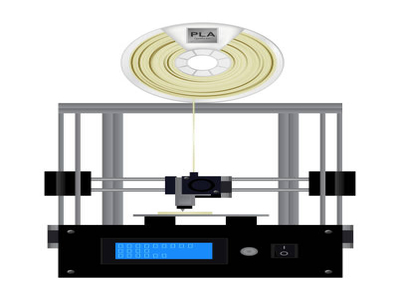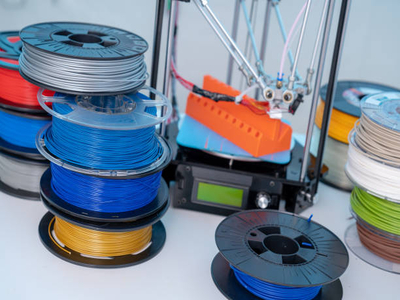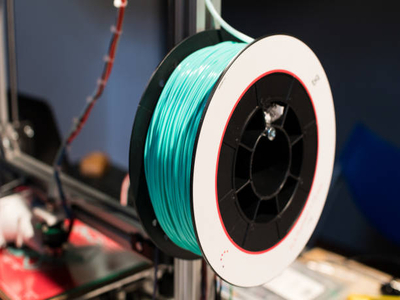Making your own dry filament box is a great way to ensure that your filaments are always in top condition.
Not only does this help with the quality of your prints, but it can also save you money in the long run!
We’ll walk you through step-by-step how to make a filament dry box. We’ll also discuss the different materials you’ll need and provide some helpful tips along the way!
Why is a Filament Dry Box Required?

Filament dry boxes are essential for keeping your filaments for 3D printing in the best possible condition and are an absolute must if you live in a humid environment!
They will not only help keep your filaments dry, but they will also protect them from dust and other contaminants that could ruin the filament altogether.
There are many different ways that you can make a dry filament box, but this blog post will show you how to make a simple and effective filament dry box.
The best part is that it will require only a few materials that you probably already have around your home!
Materials Needed
- One plastic storage bin with a lid (18-gallon size or larger)
- One package of silica gel packets
- One airtight container (quart size or larger)
- One roll of tape
Instructions
Follow these steps if you want to know how to make a filament dry box.
Step 1
Find an appropriately sized bin to use as a dry box.
Depending on how many spools you have, you may need to find a larger bin to store 3D printer filament in.
Step 2
Once you find a suitable storage bin, it’s time to add the silica gel packets, a desiccant that absorbs moisture from the air that can be found at craft stores or online.
Place the silica gel packets at the bottom of the storage bin.
How many you’ll need to use will depend on the size of your bin and how much filament you plan on storing.
Step 3
Next, find an airtight container that is big enough to fit inside your storage bin.
This container will be used to store your spools of filament, so make sure the lid on the container is airtight!
Step 4

Once you have found a suitable container, it’s time to start adding your filament.
If you are using multiple spools of filament, then you will need to place them in the container one at a time.
Before moving on to the next step, make sure that the lid on the container is secure first.
Step 5
It is finally time to seal your storage bin.
Start taping around the edges of the lid to ensure there are no gaps or openings where air can enter.
Once you have sealed up the top, place your storage bin in a cool and dry place.
Step 6
That’s it! You have now successfully made your very own filament dry box.
This simple and practical storage solution of how to make a filament dry box will help keep your filaments in top condition, no matter what the environment is like.
Now that you know how to make a filament dry box, put this knowledge to use and your prints will thank you for it!
The video below answers questions about filament dry boxes and how to protect your materials over time:
Tips to Protect Your Filament
Keep the filament in an airtight container. When you are not using your filament, make sure to store it in an airtight container to prevent moisture from seeping in and ruining the filament.
Use a desiccant. Desiccants help absorb moisture from the air and by placing a desiccant in your filament storage container, you can further protect your filament from humidity.
Store the filament in a cool, dry place. The filament should be stored in a cool, dry place away from sources of heat or water to prevent the filament from absorbing moisture from the air.
Check the filament for moisture before use. Before using your filament, it is always a good idea to check for any moisture by using a moisture meter or by simply feeling the filament for any signs of dampness.
If you follow these tips, you will be able to keep your filament dry and prevent it from absorbing too much moisture from the air.
By doing so, you will extend the life of your filament and ensure that it prints correctly.
FAQs

What Are the Benefits of Using a Filament Dry Box?
Using a dry filament box will extend the life of your filament and improve the quality of your prints.
By using a filament dry box, you will save money in the long run by preventing your filament from becoming brittle and unusable.
Do I Need to Use a Desiccant With My Filament Dry Box?
You should always use a desiccant with your filament dry box to absorb moisture.
Silica gel packets are a good option, or you can use a food dehydrator with a built-in fan to circulate the air and prevent moisture from building up.
How Often Should I Change My Desiccant?
You should change your desiccant every few months or when it becomes saturated with moisture.
Silica gel packets can be reused after being dried out in an oven, but you will need to replace them if they become saturated.
How Can I Tell if My Filament is Dry?
If your filament is dry, it will be a uniform color without any clumps, as well as be flexible, not brittle.
Try printing a small object to test your filament and see how it turns out.
If the print is of poor quality or fails, your filament is probably too moist and needs to be dried out.
My Filament Keeps Breaking/Jamming in My Printer. What’s Wrong?
If your filament keeps breaking or jamming in your printer, it could be because the filament is too moist.
Try storing your filament in a dry box with a desiccant to dry it out and keep it dry.
Conclusion
In just 6 easy steps, you now know how to make a filament dry box that will protect your filament from moisture while also extending its life.
Using a desiccant can keep your filament dry and prevent it from becoming brittle and unusable.
Be sure to change your desiccant every few months or when it becomes saturated with moisture.
Remember, if you notice that your prints are of poor quality or failing, check your filament to see if it’s too moist. Thanks for reading and happy printing!
READ MORE